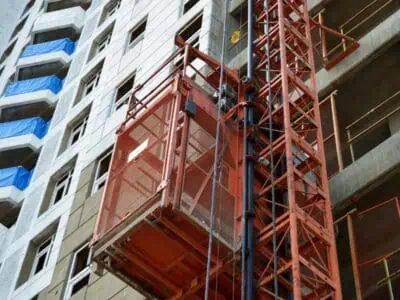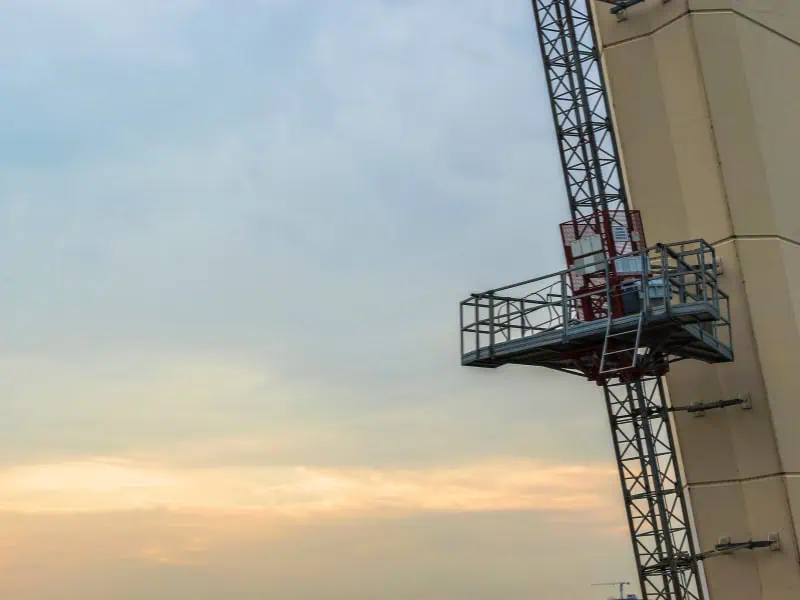In construction, timing is cash. Whether you’re coordinating a high-rise build or shifting loads across tight inner-city sites, the way you move materials has real financial consequences. That’s where builder hoists come into play—not just as a lift, but as a line item that can either drain your budget or sharpen your efficiency.
Many assume hiring a hoist is an unnecessary expense. But in reality, the right hoist can reduce manual handling, limit project delays, and improve site safety—all of which save you money. The catch? Knowing when a hoist is the smarter choice.
This guide breaks down the cost triggers, labour impacts, and conditions that make builder hoist hire a practical investment. Whether you’re running a crew, pricing up a job, or weighing the hire-versus-buy decision, you’ll get clear criteria to help you choose wisely.
What factors influence the cost of hiring a builder hoist?
Builder hoist hire costs vary widely based on project specifics. Understanding what affects pricing helps you avoid overpaying or underestimating your site needs.
- Lift height and load size: The taller and heavier the job, the more robust (and costly) the hoist needs to be.
- Site access and terrain: Deliveries on uneven or restricted-access sites require more labour and time.
- Rental duration: Longer hires may reduce daily rates, but may also require servicing or interim inspections.
- Transport and installation: Expect additional charges if your site is rural, remote, or requires crane assistance.
- Inclusions and add-ons: Some quotes include servicing, training, or dismantling, while others exclude these.
If you’re unsure which model suits your needs, it’s worth comparing the full range of rental options for builder hoist users to avoid overspending on underused gear.
Are you spending more on labour without a builder’s hoist?
Many construction sites default to manual handling, but the cost of that choice adds up quickly. Builder hoists often replace hours of material shuffling with minutes of automated lift time.
- More hands on deck: Without a hoist, you’ll likely need more workers to shift materials.
- Lost productivity: Workers spend less time on trade tasks and more time moving tools and supplies.
- Injury risk: Repeated lifting increases the odds of strains and time-off claims.
- Extended workdays: Inefficient lifting can blow out timelines and increase overtime costs.
These aren’t hypotheticals. Construction businesses routinely discover that hoists cut labour costs and speed up work. If you’re looking for a more effective planning approach, consider smart ways to manage hoist rentals and reallocate crew hours efficiently.
How do project delays drive up equipment hire costs?
Project delays hit more than just your schedule—they snowball into unexpected costs, especially for rented equipment like hoists.
- Prolonged hire periods: Every extra day adds to your final invoice.
- Idle gear charges: Equipment sitting unused still racks up rental fees.
- Supplier backlogs: Rescheduling installations may mean waiting weeks for another slot.
- Compounding trades: Delays with one trade affect everyone else in the schedule.
If you’re aiming to run lean, you can’t afford dead time. One snag at the lifting stage can throw your whole project off. That’s why it’s critical to factor in how builder hoists reduce holdups and improve site rhythm. Plus, as a bonus, you’ll improve compliance by focusing on improving job site safety with lifting tools from day one.
When is a builder hoist the smarter rental choice?
Not every site needs a hoist, but many benefit from one sooner than you’d think. Here’s when hiring makes good sense:
- Multi-level builds: Moving materials up multiple storeys manually is slow and dangerous.
- Large volumes: If you’re shifting pallets, bins, or long runs of material, manual labour isn’t viable.
- Tight deadlines: Speeding up vertical transport can help you hit milestone dates.
- Restricted sites: Hoists often succeed, where forklifts or cranes can’t operate.

These aren’t edge cases—they’re common across everything from renovations to large-scale commercial jobs. Just make sure your approach aligns with best practices for using site hoists under regulation, especially when working near public zones or confined footprints.
What should you compare when evaluating lift hire quotes?
Hire quotes can look similar at first glance, but digging deeper reveals key differences that affect value and suitability.
| Quote Component | What to Check | Why It Matters |
| Load and height capacity | Matches your site’s demands | Avoids underspecified equipment |
| Delivery and installation fees | Included or added separately | Impacts the total budget |
| Maintenance and servicing | Scheduled checkups or emergency support | Reduces breakdown downtime |
| Inclusions vs exclusions | Dismantle, permits, scaff hook-ups | Prevents surprise costs |
| Compliance documentation | Certifications and user training | Ensures on-site safety and legality |
Ignoring line-item details is a common trap. Two quotes might differ by $100, but only one includes servicing or compliance help. Look beyond the headline rate.
Is your site setup suitable for temporary lifting equipment?
Before locking in a builder hoist, it’s worth checking that your site can support the equipment safely and efficiently.
- Solid base area: The ground must handle hoist weight plus moving load.
- Safe access: Setup zones need clearance for tilt trays or cranes.
- Vertical path: Ensure no overhangs, scaffold clashes, or airspace issues.
- Exit points: Materials need to be offloaded directly where they’re needed, not half a site away.
Some builders don’t realise their hoist setup needs scaffolding modifications or level adjustments. That leads to hiccups and cost blowouts. A little prep can go a long way here.
Final thoughts on when hiring a builder hoist saves money
Builder hoist hire isn’t a universal solution—but when it fits, it delivers serious value. It reduces the number of workers needed for material handling, cuts injury risk, and helps keep your schedule on track.
So, how do you know it’s time to rent? If your build involves more than one level, moves heavy gear regularly, or can’t afford slowdowns, a hoist likely pays for itself in time saved and safety improved.
Not sure where to start? It’s worth taking a moment to see what Conveying & Hoisting Solutions recommends—their team understands the ins and outs of safe, efficient lift planning and can guide you through the process without a hard sell.




